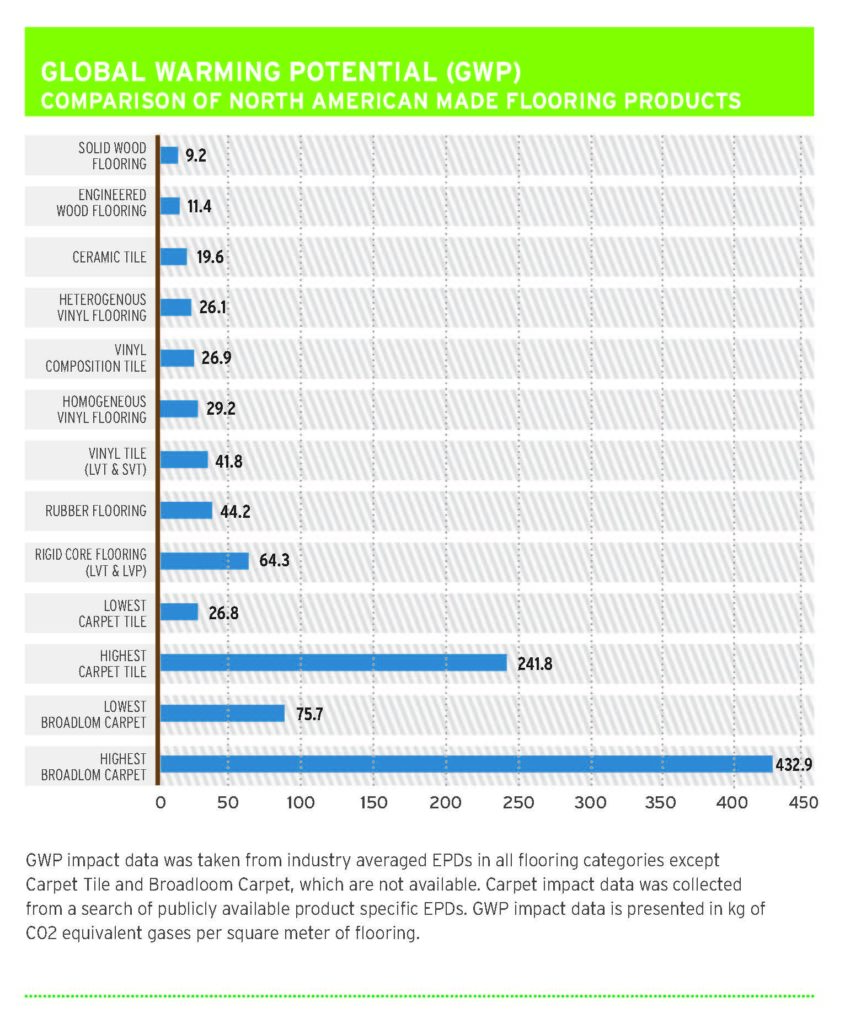
WOOD FLOORING ENVIRONMENTAL PRODUCT DECLARATIONS (EPD)
As more and more focus is directed toward the use of green or sustainable products to promote a healthier environment, Environmental Product Declarations (EPD) have become a way to verify a product’s environmental impacts. EPDs offer objective, scientific data that quantifies how a product is made, and how that product impacts the environment during its entire life cycle.
According to the USDA, “While trees grow in the forest, they store carbon dioxide from the atmosphere in their trunks, branches, stems, leaves, roots, and soil. So, when trees are sustainably harvested, wood continues to store carbon in the thousands of products we use every day, from paper products to lumber to energy generation. Trees then regrow, repeating the cycle.”
Wood flooring is a carbon-negative material. It stores carbon during its long service life, and beyond. This is because 92% of its biogenic carbon is stored permanently when it finds its final home in the landfill, as only 8% of the wood decomposes per the USEPA. Choosing flooring products that sequester and displace carbon is one of the most-efficient ways to mitigate climate change.
Environmental Product Declarations (EPD) quantify the lifetime environmental impact of products in an unbiased, factual, communicable way. They quickly have become the international standard for measuring a product’s total greenhouse gas emissions, or carbon footprint. What was made evident in these studies is that solid and engineered wood flooring have a noticeably smaller carbon footprint, or total Global Warming Potential (GWP) when compared to all competing product categories.
The Solid Wood Flooring EPD is available here
The Engineered Wood Flooring EPD is available here





